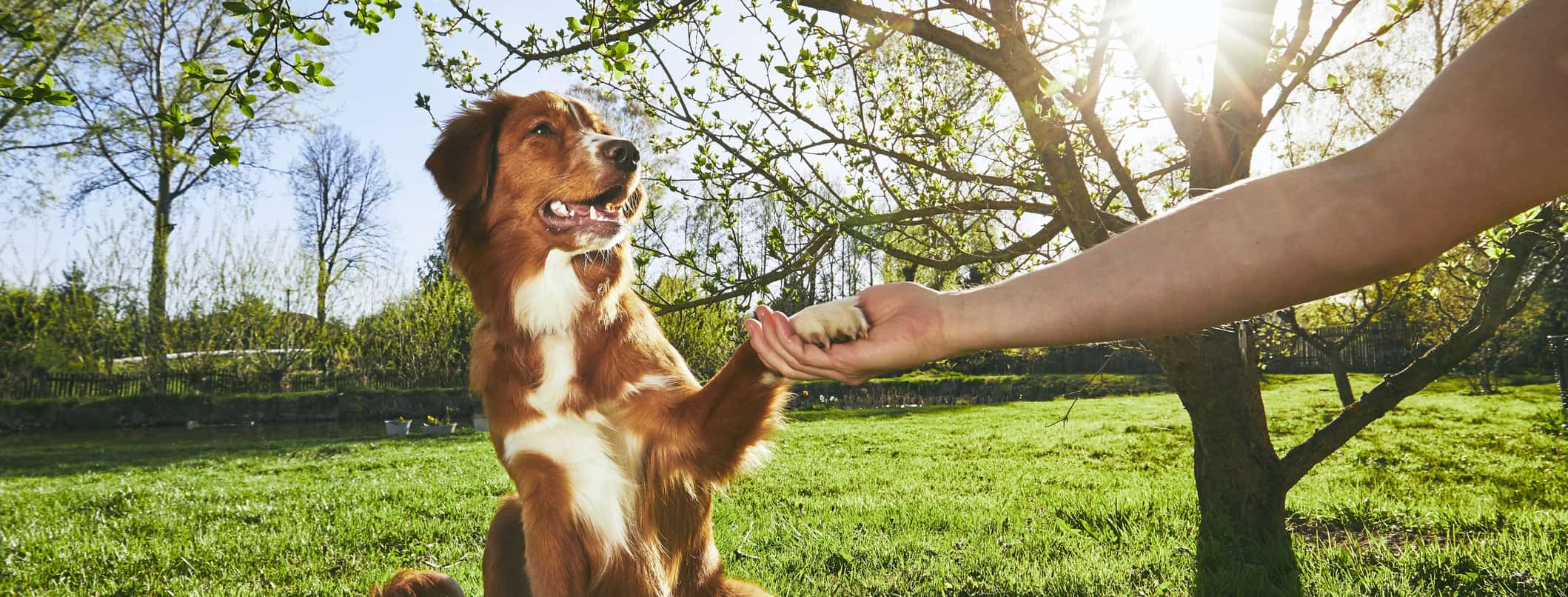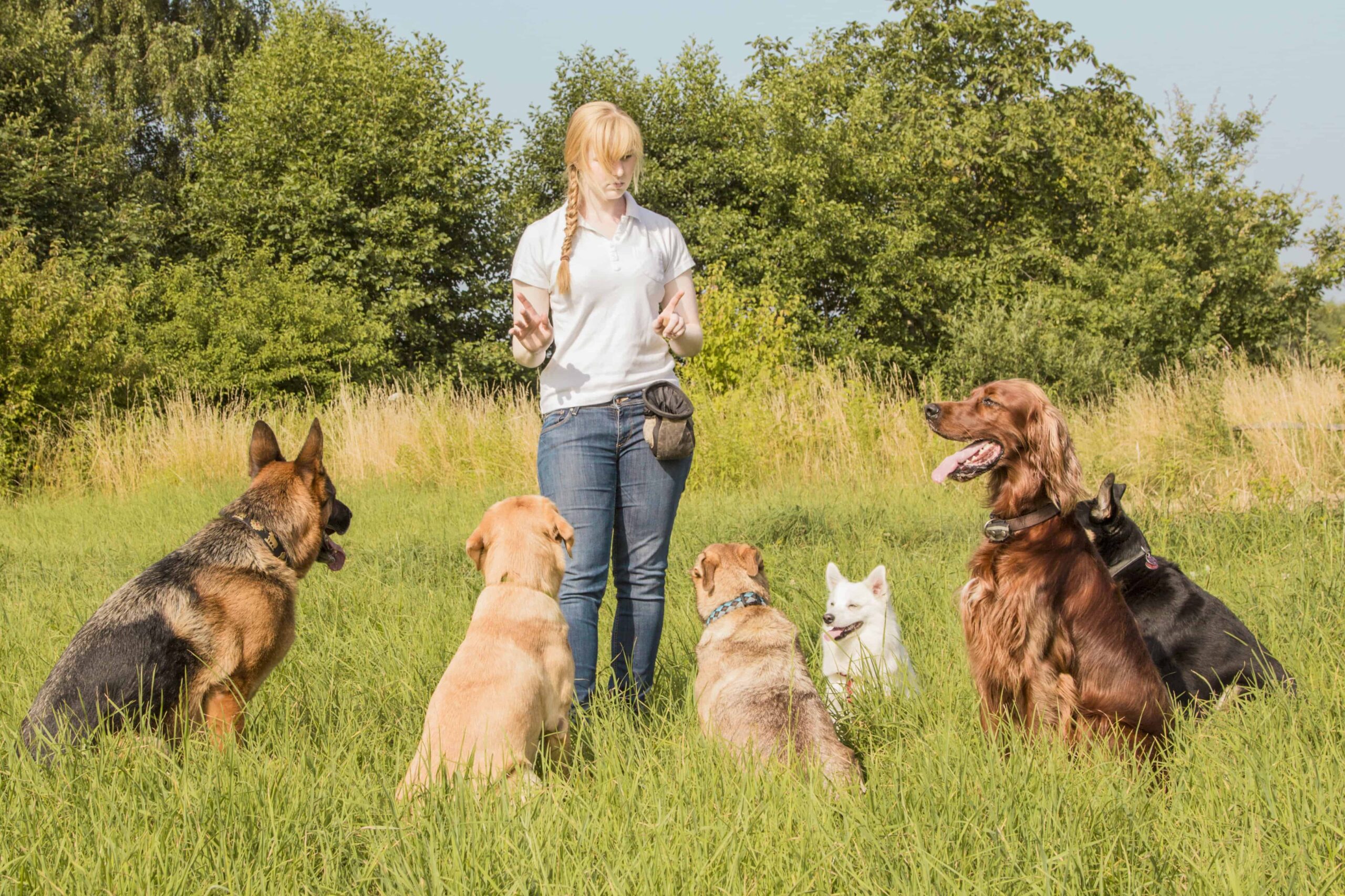Usual Behavioral Issues and Their Solutions in Dog Training
Usual Behavioral Issues and Their Solutions in Dog Training
Blog Article
Important Tips for Effective Dog Training: A Guide for Pet Dog Owners
Effective pet training is a complex procedure that needs a critical approach customized to both the animal's temperament and the proprietor's purposes. Secret elements such as developing regular commands, employing favorable support, and helping with very early socializing play essential functions in fostering a well-adjusted canine companion. Several family pet owners run into obstacles that can hinder development, leading to irritation and uncertainty. Recognizing just how to browse these challenges can dramatically improve the training experience, ultimately changing the partnership in between owner and pet. What are the essential methods that can be used to guarantee success in this endeavor?
Comprehending Dog Behavior
Recognizing canine habits is important for effective training and fostering an unified relationship between canines and their owners. dog training. Pets interact mostly through body language, vocalizations, and actions, making it crucial for proprietors to interpret these signals accurately.

Socializing plays a significant function in pet actions; exposure to numerous settings, individuals, and other pets can dramatically influence a pet dog's character. Additionally, aspects such as type characteristics and private personality should guide training techniques, as some breeds may have certain behavior attributes that require customized strategies. By recognizing these components, proprietors can develop a supportive environment that motivates favorable behavior, leading to successful training results and a deeper bond with their family pets.
Establishing Consistent Commands
Efficient communication with your pet dog starts with establishing constant commands. This fundamental element of training is essential for promoting understanding in between you and your pet. Consistency in the commands you use makes sure that your pet dog can accurately link particular words or phrases with the desired behaviors.
When selecting commands, pick clear, distinctive words that are very easy to state and set apart from one another. Stay clear of making use of similar-sounding commands that might puzzle your pet. For instance, utilizing "sit" and "stay" is appropriate, however "sit" and "hit" can result in misconceptions.
In addition, preserve the exact same tone and quantity for each and every command. Pet dogs are sensitive to singing signs, so differing your tone can develop complication.
It is just as crucial to ensure that all member of the family get on the exact same page relating to the commands made use of. A united front in command usage will certainly stop mixed signals and reinforce the understanding process.
Positive Support Techniques
The power of favorable support in canine training hinges on its capability to urge preferred actions with incentives and praise. This technique is based in the concept that behaviors complied with by positive end results are more probable to be repeated. By incorporating favorable reinforcement into your training program, you can successfully form your canine's behavior in a positive manner.
To execute favorable reinforcement, it's vital to identify what inspires your pet, whether it be treats, playthings, or verbal appreciation. When your pet dog does a desired action, such as resting on command, quickly compensate them with a treat or affection. This organization between the command and the favorable end result strengthens their understanding.
It's crucial to timing the rewards correctly; providing the support within seconds of the wanted actions helps your canine make the connection web link (dog training). Additionally, consistency is essential-- make sure that all relative utilize the same commands and benefit systems to avoid confusion

Gradually, you can decrease the frequency of deals with as your pet dog finds out the habits, transitioning to commend or periodic rewards. This method not only fosters a strong bond between you and your dog yet also advertises a favorable discovering environment, making training a delightful experience for both.
Socialization and Communication
Constantly revealing your pet dog to a variety of settings, individuals, and various other pets is essential for their social development. Socialization should start webpage early, ideally during the crucial home window of 3 to 14 weeks, when young puppies are most responsive to brand-new experiences. Nevertheless, older pets can likewise take advantage of recurring socialization efforts.
Present your canine to various settings, such as parks, pet-friendly shops, and urban areas. This exposure aids them adapt to various stimulations, lowering anxiety and anxiety responses. Encourage favorable interactions with other pets and individuals, making certain that these encounters are secure and regulated to promote self-confidence.
Make use of organized playdates with courteous pet dogs, as this can improve your pet's social skills and instruct them suitable actions. Obedience classes and training sessions likewise give outstanding chances for socialization, permitting your pet to communicate with others in a monitored environment.
Screen your canine's body movement during communications, as this will assist you evaluate their comfort degree. Gradually enhance exposure to more tough situations while guaranteeing that each experience declares. A well-socialized pet dog is much more most likely to show well balanced habits, making them a pleasure to have in any type of setting.
Dealing With Common Training Obstacles
Every pet proprietor will certainly encounter training difficulties eventually, despite their dog's age or socializing degree. Determining common problems such as stubbornness, interruptions, and fearfulness can assist in creating effective techniques for renovation.

Disturbances during training sessions can derail emphasis. To battle this, begin training in a quiet environment with minimal stimulations. Slowly present interruptions as the pet dog becomes extra skilled in commands. Short, frequent training sessions are likewise reliable in keeping attention.
Fearfulness can hinder a canine's discovering procedure. Gradual desensitization to the source of concern, paired with favorable support, can assist alleviate stress and anxiety. Patience is vital; never force a pet into a scenario that creates distress, as this may intensify the problem.
Eventually, understanding and dealing with these typical difficulties with a structured technique will certainly foster an extra efficient training experience, enhancing the bond between pet and proprietor while advertising efficient understanding.
Conclusion
In summary, effective pet training relies upon an extensive understanding of canine actions, the establishment of consistent commands, and the application of favorable reinforcement strategies. Socializing plays a crucial role in establishing well-adjusted pet dogs, while attending to typical training difficulties calls for patience and versatility. By implementing these crucial methods, animal proprietors can foster a solid bond with their canines and promote desirable behaviors, inevitably resulting in a harmonious partnership between people and their canine companions.
Understanding canine habits is necessary for reliable training and promoting a harmonious partnership between canines and their owners.Socialization plays a substantial role in pet habits; exposure to various settings, individuals, and various other pets can considerably impact a pet dog's temperament.The power of positive reinforcement in dog training lies in its ability to urge wanted behaviors via benefits and appreciation. By incorporating favorable reinforcement right into your training regimen, you can effectively form your pet's habits in a positive fashion.
In summary, effective canine training counts on a detailed understanding of canine behavior, the facility of regular commands, and the application of positive reinforcement techniques.
Report this page